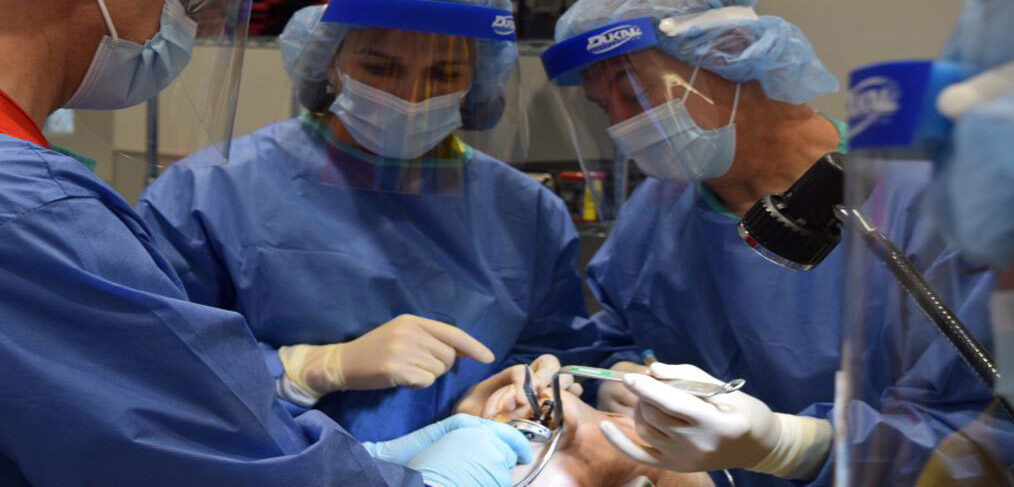
FACT SHEET: Orthopaedic Surgeons Will Need to Double Total Joint Arthroplasty Caseload to Meet Demand by 2050
LAS VEGAS (March 7, 2023)—A new study presented at the 2023 Annual Meeting of the American Academy of Orthopaedic Surgeons (AAOS) found that, based on projection models, orthopaedic surgeons will need to either double their total joint arthroplasty (TJA) caseload or increase the number of surgeons by 10% every five years to meet demand.
In 2019, approximately 1.25 million TJA procedures, including hip and knee arthroplasties, were performed.[i] One of the most common surgeries in the United States, the growing demand for TJAs has outpaced the size of the orthopaedic workforce. As orthopaedic surgeons report high rates of burnout,[ii],[iii] there is concern that the workforce may not be able to keep up with the growing demand for TJAs.
STUDY OVERVIEW
The population-based study utilized national data from the National Inpatient Sample (NIS) and Association of American Medical Colleges (AAMC) to determine the number of TJAs and active orthopaedic surgeons from 2010– 2020. To determine growth trends, the researchers used arthroplasty-to-surgeon ratios (ASRs) and an arthroplasty surgeon growth indicator (ASGI). The ASR values estimate the average annual output of total hip arthroplasty (THA), total knee arthroplasty (TKA) or TJA procedures performed by an orthopaedic surgeon in a given year. ASGI values were calculated using the 2017 ASR values as the standard point of comparison.
OUTCOMES
- The annual volume of primary TJAs will grow 70% to 2,257,326.
- A higher growth in demand for THAs compared to TKAs was observed (1,219,852 THAs vs. 1,037,474 TKAs by 2050).
- The number of active orthopaedic surgeons is projected to decrease 14% by 2050, from 18,834 surgeons in 2020 to 16,189 in 2050. The number of residents (post-graduate year one) is projected to grow 39% by 2050 from 844 residents in 2020 to 1,173 in 2050 and joint reconstruction fellowship positions are forecasted to grow by 149% from 189 fellows in 2020 to 460 in 2050; however, these projections are still predictive of a workforce that will be unable to keep pace with the growing number of TJA procedures.
- In 2017, the average primary TJA caseload per active orthopaedic surgeon was 65.2 procedures while the projected TJA-ASRs for 2050 is 139.4. The number of TJAs performed per surgeon will double by 2050 to meet the projected demand.
- Increasing the number of orthopaedic surgeons by 10% every five years could ensure the caseload per surgeon remains similar to the 2010–2017 numbers.
[i] Agency for Healthcare Research and Quality. HCUP Fast Stats Data Tools | AHRQ Data Tools. Accessed Feb. 10, 2023. https://datatools.ahrq.gov/hcup-fast-stats
[ii] Ames SE, Cowan JB, Kenter K, Emery S, Halsey D. Burnout in Orthopaedic Surgeons: A Challenge for Leaders, Learners, and Colleagues. J Bone Jt Surg. 2017;99(14):e78. doi:10.2106/JBJS.16.01215
[iii] Smith JM, Boe EA, Will R. Physician Wellness in Orthopedic Surgery. Orthop Clin North Am. 2021;52(1):41-52. doi:10.1016/j.ocl.2020.08.004
# # #
2023 AAOS Annual Meeting Disclosure Statement
About the AAOS
With more than 39,000 members, the American Academy of Orthopaedic Surgeons is the world’s largest medical association of musculoskeletal specialists. The AAOS is the trusted leader in advancing musculoskeletal health. It provides the highest quality, most comprehensive education to help orthopaedic surgeons and allied health professionals at every career level to best treat patients in their daily practices. The AAOS is the source for information on bone and joint conditions, treatments and related musculoskeletal healthcare issues; and it leads the healthcare discussion on advancing quality.
Follow the AAOS on Facebook, Twitter, LinkedIn and Instagram.
For more information, contact:
| Lauren P. Riley | 847-384-4031 | 708-227-1773 | pearson@aaos.org |
| Deanna Killackey | 847-384-4035 | 630-815-5195 | killackey@aaos.org |
